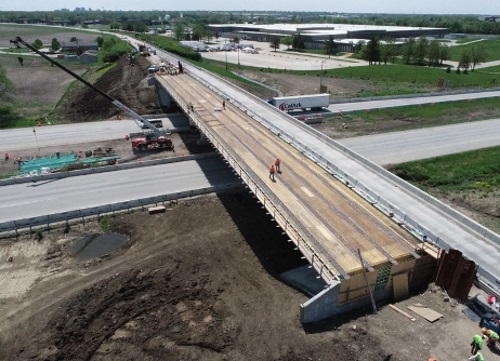FEDERAL ACTION
Remarks by President Biden on the Bipartisan Infrastructure Bill and Build Back Better Agenda – White House
25% of all critical infrastructure in the US is at risk of failure due to flooding, new report finds – CNN
Failure on infrastructure will hit local governments the hardest – The Hill (Opinion)
COVID-19
Tulsa Transit is now requiring medical exemption forms for riders who want to go maskless on buses – Public Radio Tulsa
Transportation Leaders Push Transformative Updates Post-COVID – Transport Topics
NEPA
How Biden’s NEPA plan could change the energy sector – E&E News
Winston enviro chair, ex-Trump DOJ official unpacks Biden’s NEPA overhaul – Reuters
INFRASTRUCTURE RESILIENCE AND SUSTAINABILITY
Reports Highlight Growing Federal Focus on Resiliency – AASHTO Journal
Lagging funds leaves Michigan’s aging infrastructure in critical need of funding – WJRT-TV
FAA Invests $479.1M in Safety, Sustainable Infrastructure at Airports – FAA
After biking boom, some cities beef up infrastructure – Smart Cities Dive
Officials outline progress in Cairo river port development – Capitol News Illinois
America’s Ports are Preparing Large Infrastructure Projects – Maritime Executive
AIR QUALITY
Five Midwest States Plan Build-Out of EV Charging Network – AASHTO Journal
Google is updating Maps, Search and other products to help consumers save energy and reduce emissions – CNBC
UTA electric buses being outfitted with air quality monitors for better data, better policies. – KSL.com
Investing in electric vehicle charging infrastructure is a win for our climate, US workers – The Hill (Opinion)
ENVIRONMENTAL JUSTICE
Study: Black, Latino Bicyclists in Chicago Face More Ticketing and Less Infrastructure – WTTW-TV
New report from Johns Hopkins finds stark transit inequity in Baltimore – Johns Hopkins University
Pollution from freight traffic disproportionately impacts communities of color across 52 US cities – American Geophysical Union
NATURAL RESOURCES
Ship’s anchor may have caused massive California oil spill – AP
New Chicago River Sensors Give Real-Time Updates On Water Quality – Block Club Chicago
CULTURAL RESOURCES
Rehab of Former Lackawanna Station in Roxbury Wins Award – TAPinto Roxbury
Have you driven along PA Route 6? Find out why you should – NorthcentralPA.com
HEALTH AND HUMAN ENVIRONMENT/ACTIVE TRANSPORTATION
More bike paths? Safer sidewalks? Biden’s infrastructure bill has money for them – Fresno Bee
New Haven safety plan would prioritize bicyclists, pedestrians and buses – WSHU Radio
Ohio DOT is working to make dozens of intersections safer for pedestrians – WTOL-TV (Video)
With San Francisco transit still struggling, shared bikes and scooters are booming – San Francisco Examiner
At the George Washington Bridge Casino, Your Bets Are a Bike Ride Away – New York Times
TRB RESOURCES/ANNOUNCEMENTS
Climate Change and ‘A New Normal of Extremes’ – National Academies of Sciences, Engineering, and Medicine
FEDERAL REGISTER NOTICES
National Environmental Policy Act Implementing Regulations Revisions – Council on Environmental Quality (Notice of proposed rulemaking)
Fiscal Year 2021 Competitive Funding Opportunity: Innovative Coordinated Access and Mobility (ICAM) Pilot Program – FTA (Notice of Funding Opportunity)
Release of the Draft Policy Assessment for the Particulate Matter National Ambient Air Quality Standards – EPA (Notice of availability)
Local Government Advisory Committee (LGAC) and Small Communities Advisory Subcommittee (SCAS) Meeting – EPA (Notification of public meeting)
Proposed Consent Decree; Clean Air Act Citizen Suit – EPA (Notice of proposed consent decree; request for public comment)
Takes of Marine Mammals Incidental to Specified Activities; Taking Marine Mammals Incidental to Long Beach Cruise Terminal Improvement Project in the Port of Long Beach, California – NOAA (Notice; issuance of incidental harassment authorization)


